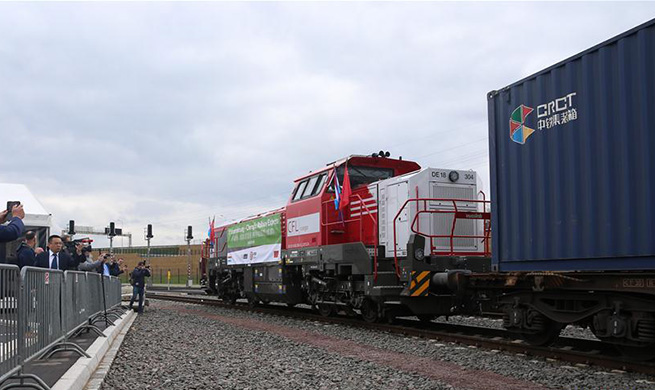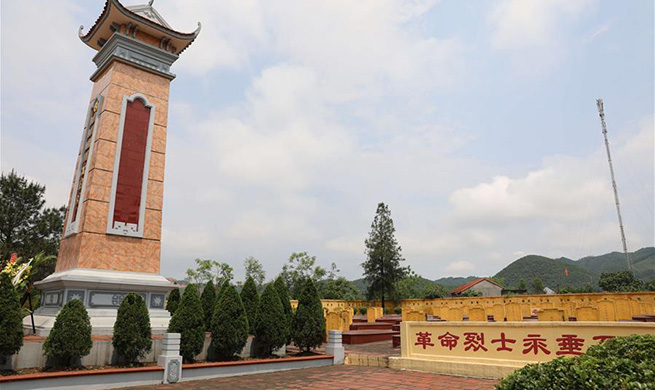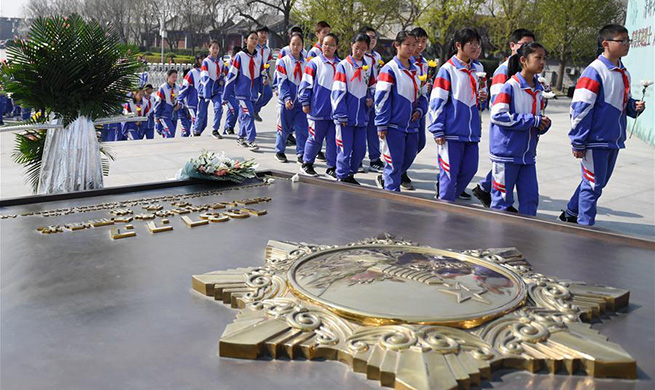BERLIN, April 5 (Xinhua) -- A century after the founding of the Bauhaus school of design and architecture, the new Bauhaus museum officially opened in the German city of Weimar on Friday.
The new Bauhaus Museum Weimar opened with a permanent exhibition of around 1,000 objects from the early days of the Bauhaus movement. The objects come from the collection of the Klassik Stiftung Weimar, one of Germany's largest and most important cultural institutions.
"The intellectual anatomy of this city and of the Klassik Stiftung Weimar will change," announced Hellmut Seemann, president of the Klassik Stiftung Weimar, on Thursday.
The Klassik Stiftung Weimar and the city of Weimar held an international open architectural competition in 2011 to help decide the appearance of the new museum.
The Berlin architect Heike Hanada, who won the competition, took a minimalist approach to the design of the building, whose grey facade is divided into 24 horizontal LED lines.
Hanada said she had sought to create a building that "already sees itself as a museum" while showing "the free and experimental impulses of the Bauhaus".
Construction began in 2015, and three years later, the 2,000-square-meter building, divided into five levels, was completed. The building costs were 22.6 million euros (25.4 million U.S. dollars).
Speaking on Thursday, the Thuringian Minister of Culture Benjamin-Immanuel Hoff highlighted that the "bundling and magnifying function that Weimar has for modernity is also expressed in the Bauhaus Museum".
The Bauhaus art school was founded in April 1919 in the city of Weimar by Walter Gropius. As a fusion of art and craftsmanship, the school represented a new approach in terms of style and concept.
The Bauhaus existed from 1919 to 1933 and is today regarded as the home of the avant-garde of classical modernism in the areas of free and applied art and architecture.













